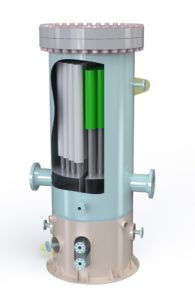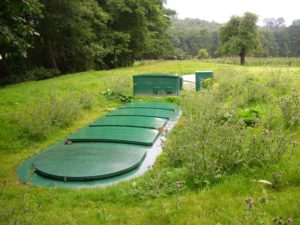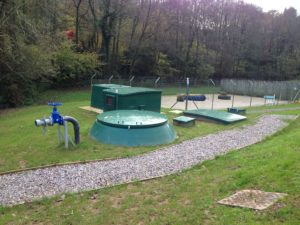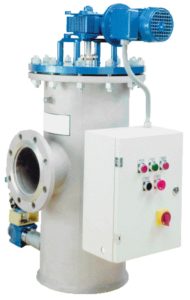Xylem Launches Cutting Edge Ozone-enhanced Filtration System
Xylem Inc. has launched a cutting-edge, ozone-enhanced biologically active filtration system and multi-barrier solution for municipal wastewater treatment. Xylem’s Leopold Oxelia combines ozone, filtration and analytical instrumentation to deliver optimal wastewater treatment for water reuse and discharge into sensitive waters.
Growing populations and decreasing fresh water resources are leading to increased demand for potable reuse of wastewater treatment effluent. Previously difficult to treat pollutants like personal care products (PCPs), active pharmaceutical ingredients (APIs) and endocrine disrupting compounds (EDCs) can now be cost effectively removed from a water stream using Xylem’s Leopold Oxelia. This multi-barrier removal opens up increased options for water reuse, including industrial use, groundwater recharge, agriculture and even direct potable reuse.
The Leopold Oxelia system also makes effluent suitable for direct discharge into the most sensitive ecosystems. Around the globe, vital aquatic ecosystems are adversely impacted by contaminants that are not adequately treated by conventional wastewater treatment systems. Public concerns about human health and that of water bodies have encouraged many countries and utilities to develop their own criteria in order to protect vital aquatic environments within their jurisdictions. Switzerland has already set removal of ‘contaminants of emerging concern’ (CEC) as a top priority and recently imposed advanced micro-pollutant treatment for wastewaters into federal water protection laws.
Ozone-enhanced, biologically active filtration systems have lower capital costs than reverse osmosis-based (RO) membrane solutions and, because the systems do not produce another waste stream requiring further treatment, operations are simpler and more cost efficient.
Anton Callery, product manager with Xylem said, ““Xylem’s Leopold Oxelia ozone-enhanced biologically active filtration system harnesses the power of ozone to break down organic carbon compounds and pathogens. Microbes in the filtration system biologically use these smaller, partly oxidized organics for food, resulting in complete biodegradation. Unlike other treatment systems, the compounds are not just concentrated in another waste stream; they are destroyed. Recently tightened regulations, such as in Switzerland, will require the implementation of advanced treatment systems to minimise the quantity of Trace Organic Contaminants (TOrCs) entering the water system and to protect sensitive water bodies as drinking water resources. This solution from Xylem can be used to upgrade existing wastewater treatment plants to meet new regulations.”
“With Xylem’s experience and process knowledge of ozone, filtration and system control technologies, a cost-effective, advanced multi-barrier treatment train that is optimized to reduce energy and loss of water can be designed for a customer’s specific water matrix. Online monitoring in a single integrated control platform provides confidence and control to ensure optimal performance,” concluded Harald Stapel, ozone product manager with Xylem.
Xylem’s Leopold Oxelia is suitable for municipal wastewater tertiary applications of more than one million gallons per day (MGD) (160 cubic metres per hour). Xylem offers comprehensive design support and a process guarantee with the product.
Source: Xylem Inc.







